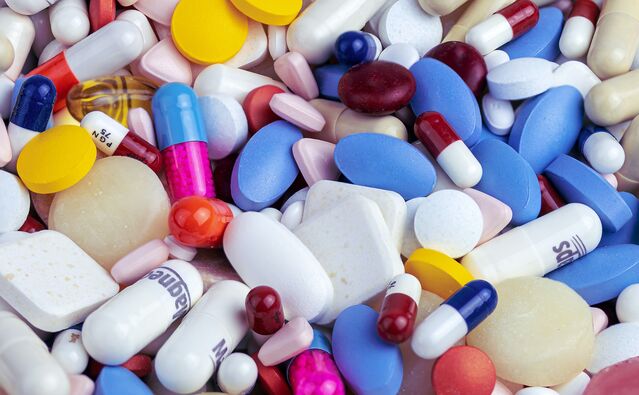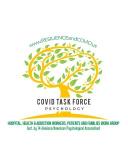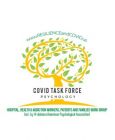Suicide
Suicide by Intentional Overdose in Children
The missing variable in tackling teen suicide is the addiction epidemic.
Posted February 2, 2021
This post was written by Dr. Patricia A O’Gorman.
Today I evaluated a 12-year-old teen who was being admitted to the adolescent drug rehabilitation center where I consult. In addition to addiction, his accompanying medical information indicated he had recently been admitted to a hospital for an overdose.
Small, bright, somewhat chubby, he looked more like an 8- or 9-year-old. He spoke freely about his intense LSD and cannabis use spiked by occasional pill use of a wide variety of “whatever I can get.” When I asked about what he recently overdosed on, he offered a shy smile, looked up from under impossibly thick eyelashes, and said, “Tylenol.”
“You overdosed on Tylenol?” I asked.
He shook his head yes. “Look, I’ve been on pot since I was 6. I knew pot and LSD wouldn’t do it. So I took a bottle of Tylenol.”
The catalyst was ongoing physical and sexual abuse by his stepfather. “We’ve been locked up together. There was only one way I could get out. I took it.”
Since the pandemic began, I have noticed an increasing number of teens who have addiction, sharing that their overdoses were suicide attempts. Some were pleased they were rescued; others, whose depression is so deep, wished they had been allowed to die.

Increasing, Pandemic-Related Teen Mental Health Problems
Our youth are experiencing an increasingly wide variety of stressors: lack of education tailored to their needs, insufficient mental health supports, food shortages, and a dearth of supportive adults. Many youth are also living with increasingly stressed adults who may have once been able to offer support but who are now using alcohol and drugs to soothe their own personal despair.
Too many of these stressed-out adults model escape through anesthetizing their feelings. (Just one indicator is online alcohol sales, which have increased 262% from 2019 for the week ending March 21, 2020 [Pollard et al, 2020]). It is no wonder that many children consider the use of substances not only to soothe themselves but to rescue them permanently from lives they feel they can no longer manage.
Dr. Christina Rodriquez, a psychologist researching child abuse during the pandemic, concluded:
The most frequent reporters of child maltreatment—teachers, doctors, mental health professionals—suddenly lost access to children during this pandemic. Official reports to child welfare in many states plummeted (Jonson-Reid et al., 2020) even while news reports described increases in hospital visits and hospitalizations from child abuse (Da Silva, 2020; Woodall, 2020).
Teen Suicide and Childhood Maltreatment
“Childhood maltreatment constitutes experiences of any sexual, physical, and emotional abuse and/or neglect that result in substantiated or possible harm that affects the individual’s physical and mental health” (Angelakis et al, 2020). Evidence suggests that childhood maltreatment results in youth fantasizing about their own death, even mentally rehearsing suicide scenarios.
Recently, reporters began exploring whether school closures have resulted in increased childhood maltreatment and the impact of school closures on the mental health of our children, including its link to suicides. While increasing numbers of “adolescent suicides during the pandemic cannot conclusively be linked to school closures and national data on suicides in 2020 have yet to be compiled, there is mounting concern” (Tingley, 2021).
… and impulsivity.
Dr. Paul Nestadt, a psychiatrist at the Johns Hopkins School of Medicine, observed that “Suicide is also surprisingly impulsive. A majority who decide to do it act within an hour … nearly a quarter act within five minutes. Not having access to a lethal weapon during that time greatly reduces the risk of death (Tingley, 2021).” The lethal weapons to which our youth have immediate access are drugs. Unfortunately, many are using them.
Teens Have a Wide Access to Drugs
Our youth have access to drugs from a variety of sources: on the street, through friends, and from doctors who prescribe them based on increasingly time-limited office visits, the most commonly abused being stimulant medication.
Youth require, at the very least, thorough screenings to see if their symptoms are the result of ADD or ADHD, and not the result of other mental health concerns such as trauma, depression, or anxiety, all of which share the same cluster of symptoms: struggles with concentration, difficulty in focusing, forgetfulness, fidgeting, impulsiveness, problems sleeping, angry outbursts, boredom, mood swings, or poor decision-making. Prescribing the wrong medication opens a pathway for a youth to trade this highly valued street commodity.
According to Dr. Caleb Alexander, co-director of the Center for Drug Safety and Effectiveness at Johns Hopkins, “Unfortunately, just as with opioids, these medicines are far too accessible in bathrooms and bedrooms and kitchen cabinets all over the country”(Lieber, 2018).
Risk Factors for Adolescent Suicide Risk During the Addiction Epidemic
The standard list for risk factors of suicide needs to be expanded from warning signs, such as those indicated by Stanford Children’s Health:
- Noticeable changes in eating or sleeping habits
- Unexplained or unusually severe, violent, or rebellious behavior
- Withdrawal from family or friends
- Sexual promiscuity, truancy, and vandalism
- Drastic personality change
- Agitation, restlessness, distress, or panicky behavior
- Talking or writing about committing suicide, even jokingly
- Giving away prized possessions
- Doing worse in school
To also include:
- Substance use
- Access to drugs and or alcohol
- Access to any prescription medication, including those prescribed for their parents or themselves
- Access to OTC medications such as Tylenol, and cough syrups containing dextromethorphan
- Isolation
- Enduring emotional, physical, or sexual abuse
- Witnessing domestic violence
- Being isolated with a known abuser
- A known abuser having access to this youth
What we can do to help combat this epidemic within a pandemic is relatively simple: ask youth about their drug use. Be curious, compassionate, and direct.

Patricia A. O’Gorman, Ph.D., is a clinical psychologist with an expertise in women, substance abuse, psychological trauma, resilience, and their relationship, and co-chairs (with Dr. Maureen O’Reilly-Landry) the Hospital, Healthcare, and Addiction Workers, Patients and Families work group, part of the COVID Psychology Task Force (established by 14 members of the American Psychological Association).
Dr. O’Gorman formerly served as director of the Division of Prevention for the National Institute on Alcohol Abuse and Alcoholism (NIAAA), was a co-founder of The National Association for Children of Addiction, where she serves on the Advisory Board, is chairperson of the Advisory Board of Horses Healing Hearts, and secretary of the board of the Sober St. Patrick’s Day Foundation. She has held leadership positions in eradicating sexual violence and promoting child welfare.
Dr. O’Gorman is currently the consulting psychologist for both the Merkel Veterans Residence and the Rose Hill Adolescent Residential Treatment Program of St. Joseph’s Addiction and Treatment and Recovery Centers in Saranac Lake, NY.
References
Angelakis, I., Austin, J. L., & Gooding, P. (2020, August 5). Association of Childhood Maltreatment With Suicide Behaviors Among Young People. JAMA Network Open. https://jamanetwork.com/journals/jamanetworkopen/fullarticle/2769030
Green, E. L. (2021, January 24). Surge of Student Suicides Pushes Las Vegas Schools to Reopen. https://www.nytimes.com/2021/01/24/us/politics/student-suicides-nevada-coronavirus.html
Lieber, M. (2018, May 21). Unnecessary and accidental use of ADHD drugs increases over 60%, study suggests. CNN. https://www.cnn.com/2018/05/21/health/adhd-medication-exposure-study/index.html
Pollard, M. S., Tucker, J. S., & Green, H. R., Jr. (2020, September 29). Changes in Adult Alcohol Use and Consequences During the COVID-19 Pandemic in the US. JAMA Network Open. https://jamanetwork.com/journals/jamanetworkopen/fullarticle/2770975
Stanford Children’s Health - Lucile Packard Children's Hospital Stanford. (n.d.) Teen Suicide: Learning to Recognize the Warning Signs. https://www.stanfordchildrens.org/en/topic/default?id=teen-suicide-learning-to-recognize-the-warning-signs-1-1696
Tingley, K. (2021, January 25). Will the Pandemic Result in More Suicides? The New York Times. https://www.nytimes.com/2021/01/21/magazine/will-the-pandemic-result-in-more-suicides.html




